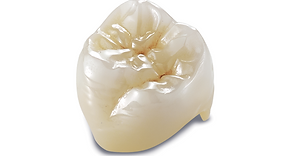Baxter Dental Care
Jeffrey Baxter D.D.S. & Linda Albright D.D.S.
513-932-5856
777 Columbus Ave. #2, Lebanon, OH 45036
Restorative
Composite Fillings
Composite fillings are made of tooth colored resins that we use in teeth to fill cavities, repair tooth decay, and fill crevices. These tooth colored fillings are natural -looking and do not contain mercury like the older silver based fillings. Composite fillings are held in place with a bonding resin which helps provide strength and stability to a tooth weakened by decay. The older silver fillings were generally not bonded and over time had a tendency to produce craze lines and small fractures in the adjacent tooth structure. Often, in our office, a well- placed composite filling may be used as a conservative alternative to a porcelain restoration.

Cosmetic Bondings
Cosmetic bonding involves attaching tooth colored filling materials to a chipped or broken tooth to improve the appearance of the tooth. Usually a tooth can be cosmetically bonded in one dental office visit, and the finished appearance of the tooth will appear natural and blend with the surrounding natural teeth. Cosmetic bonding is not as strong as a porcelain veneer and may have a tendency to stain over time, but it preserves most of the natural tooth structure and usually has a lesser cost.

Porcelain Veneers
Porcelain veneers are thin shells of porcelain that are custom adapted to fit over your natural teeth to improve your smile. Veneers correct chipped and discolored enamel that is present in your natural teeth. You can select a brighter color of enamel, a longer tooth length, and close spaces between your teeth with your new veneers. Veneers can also be made of composite bonded to the teeth, but they are less durable and less resistant to staining than porcelain veneers.

E Max Crowns
IPS E Max is the lithium disilicate glass-ceramic for the construction of cosmetic crowns. It can be used to restore form and function to a tooth that is broken down and not suitable for placement of a composite filling. E Max crowns are usually used on front teeth because of their excellent esthetics, superior fit, and high strength. But if we are restoring a back tooth, we often chose a zirconium tooth colored material due to its even higher strength and durability.

Bruxzir/ Zeno Crown
Zirconia is a newer ceramic-like material used to construct tooth colored crowns that are more esthetic than crowns that contain metal. Some older crowns would show a metal margin at the gumline which would impart a grey or dark color, or the entire tooth would be fabricated of gold. Zirconia crowns use the trade names of Bruxzir or Zeno, and
are very strong so they stand up to heavy chewing forces on the back teeth. Some more translucent anterior Zirconia materials are being fabricated to be used as crowns on front teeth. They are not as sturdy as posterior Zirconia. but appear to be more resistant to chipping and breaking than older porcelains.

Zirconium Bridges
Dental bridges can be used to replace a single missing tooth if you have solid teeth on either side of the tooth space. Usually a bridge can be used to replace only one or two missing teeth in either the upper or lower arch of your mouth. In our office we use zirconia, a tooth colored non-metallic material, to construct natural looing bridges which blend with the surrounding teeth. Since dental bridges are supported on either side by other teeth, these supporting teeth must be strong enough to have a Zirconia restoration placed on it also. If the adjacent teeth are not suitable to be included in the new bridge, then an implant should be considered to replace the missing tooth.
